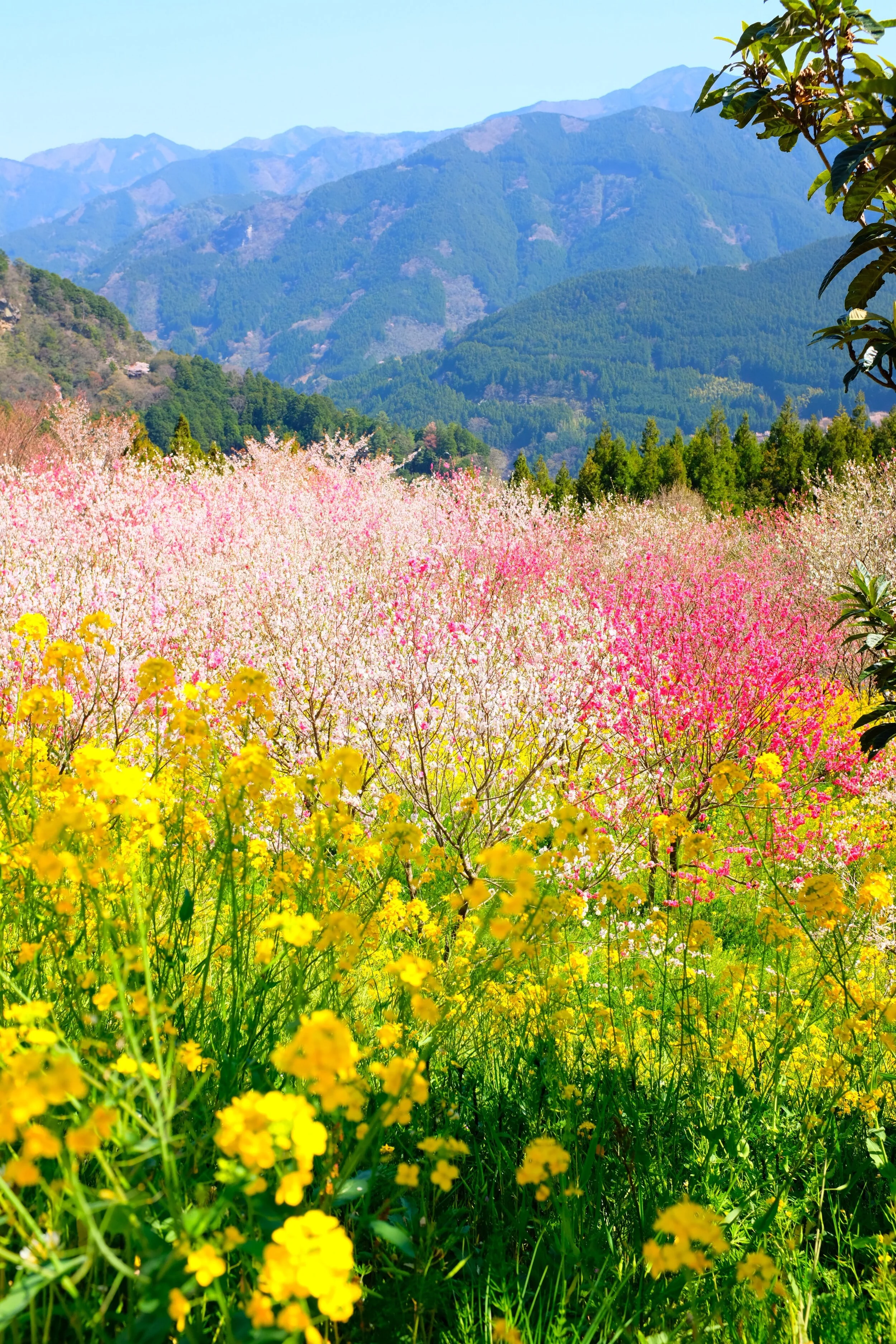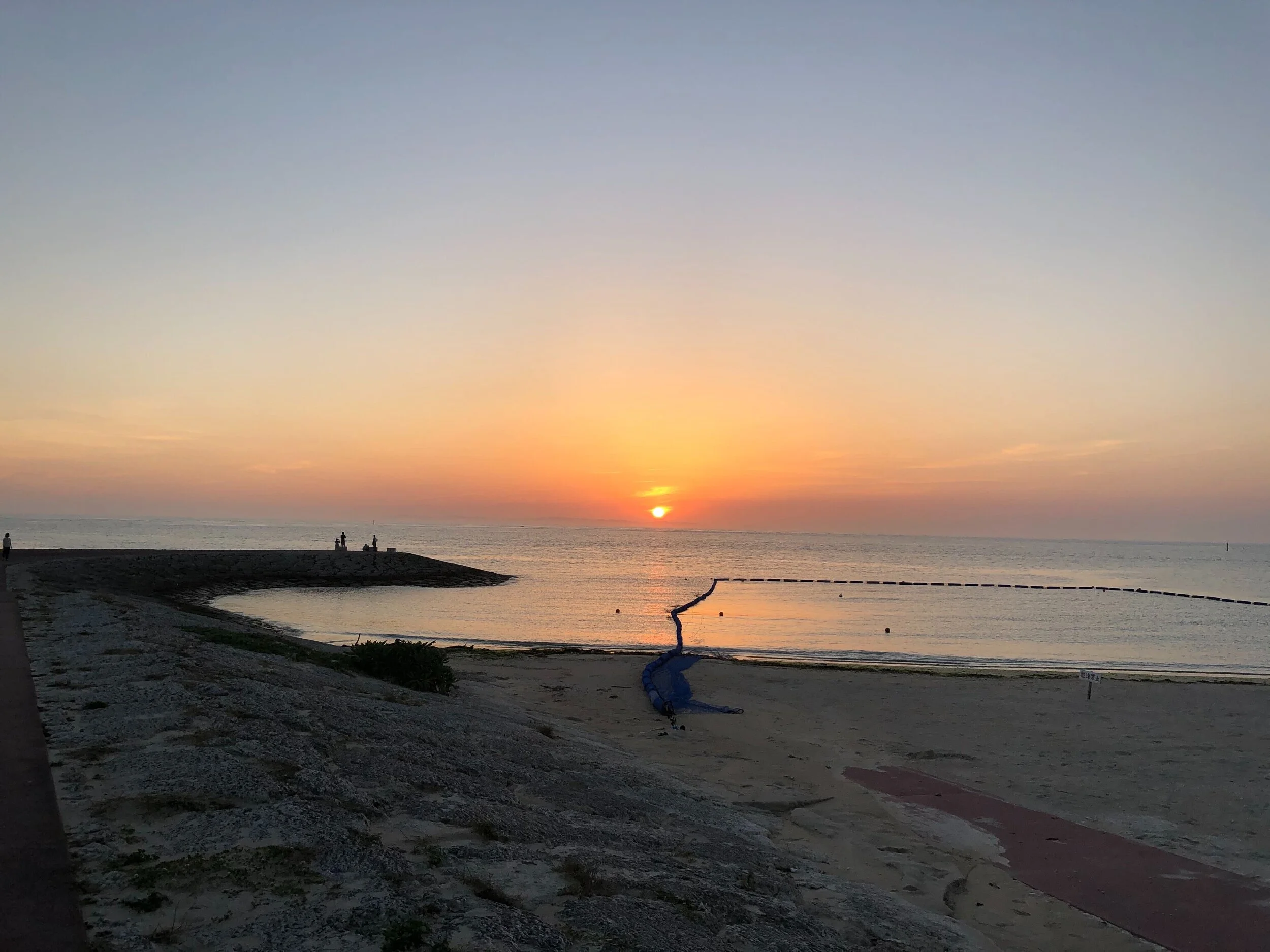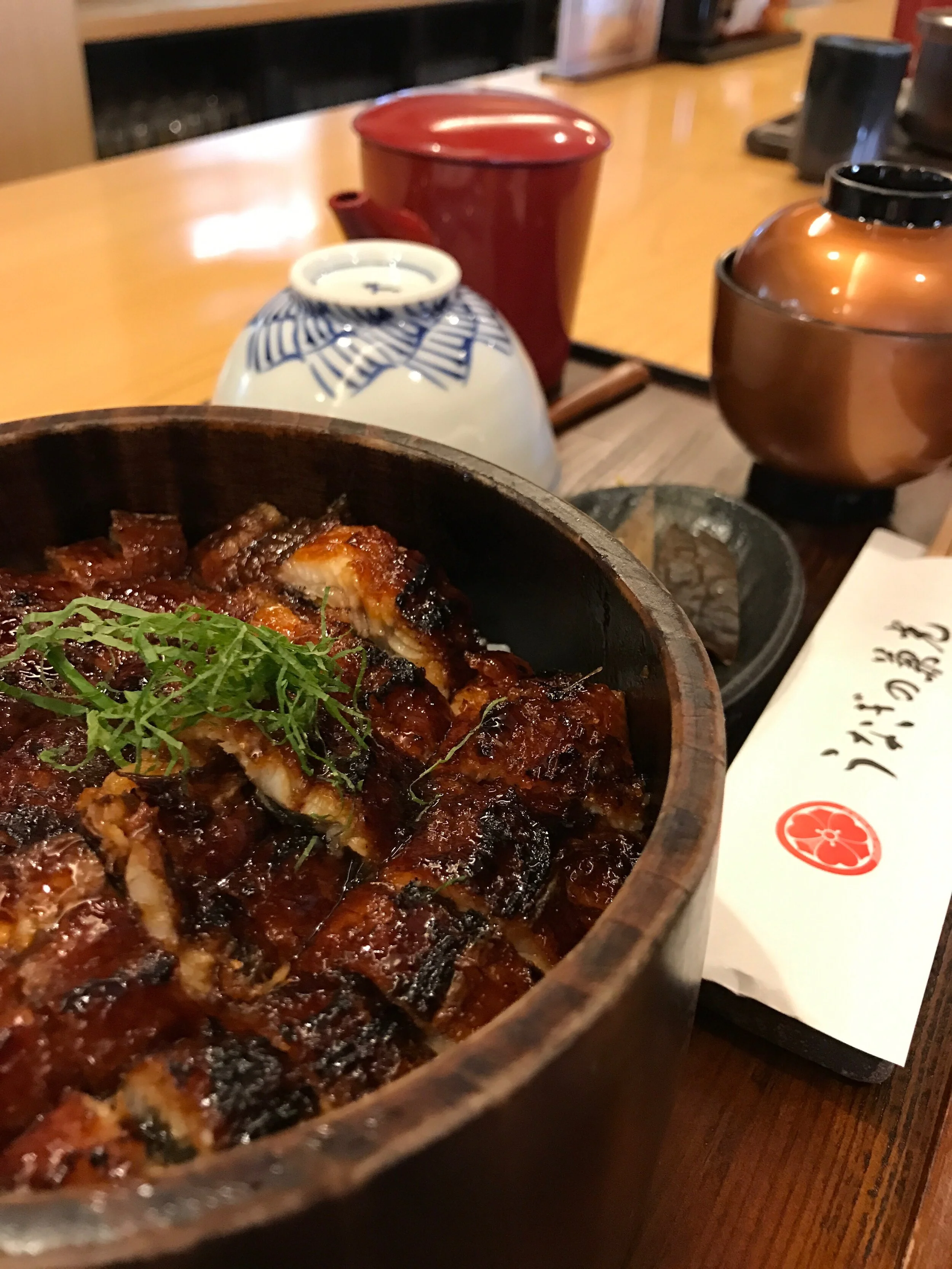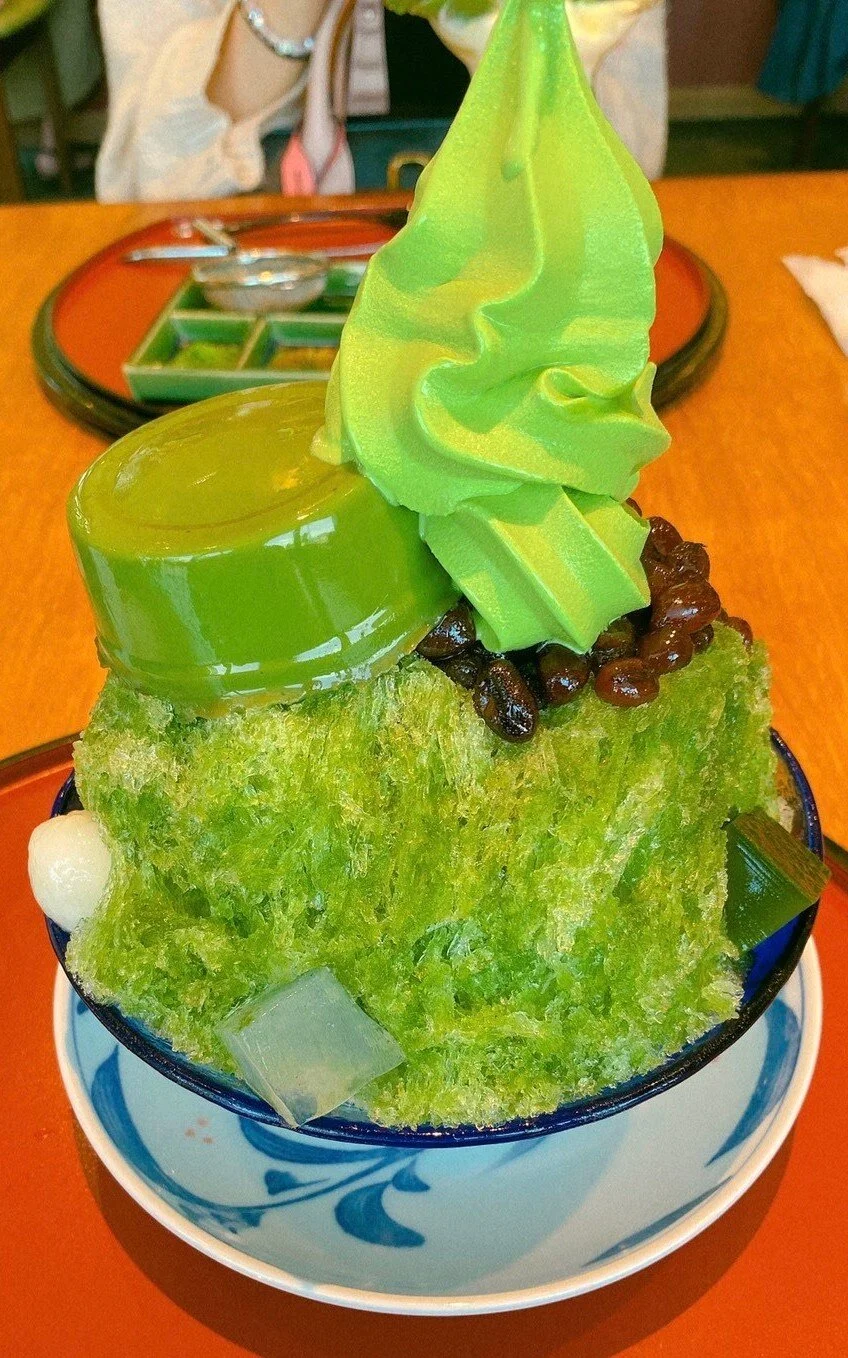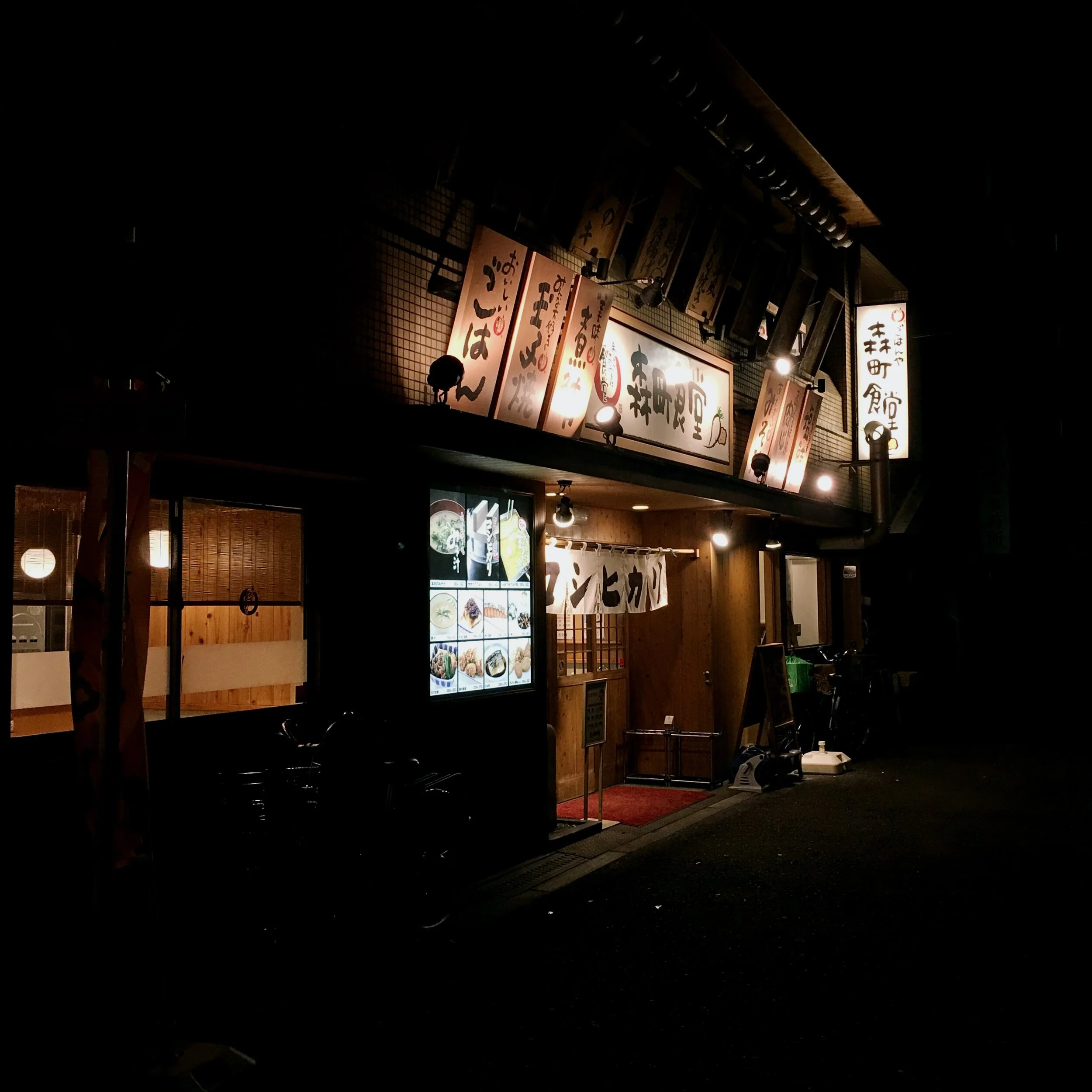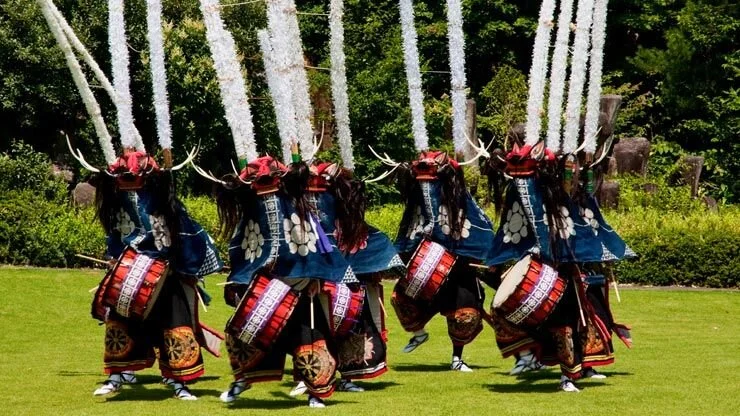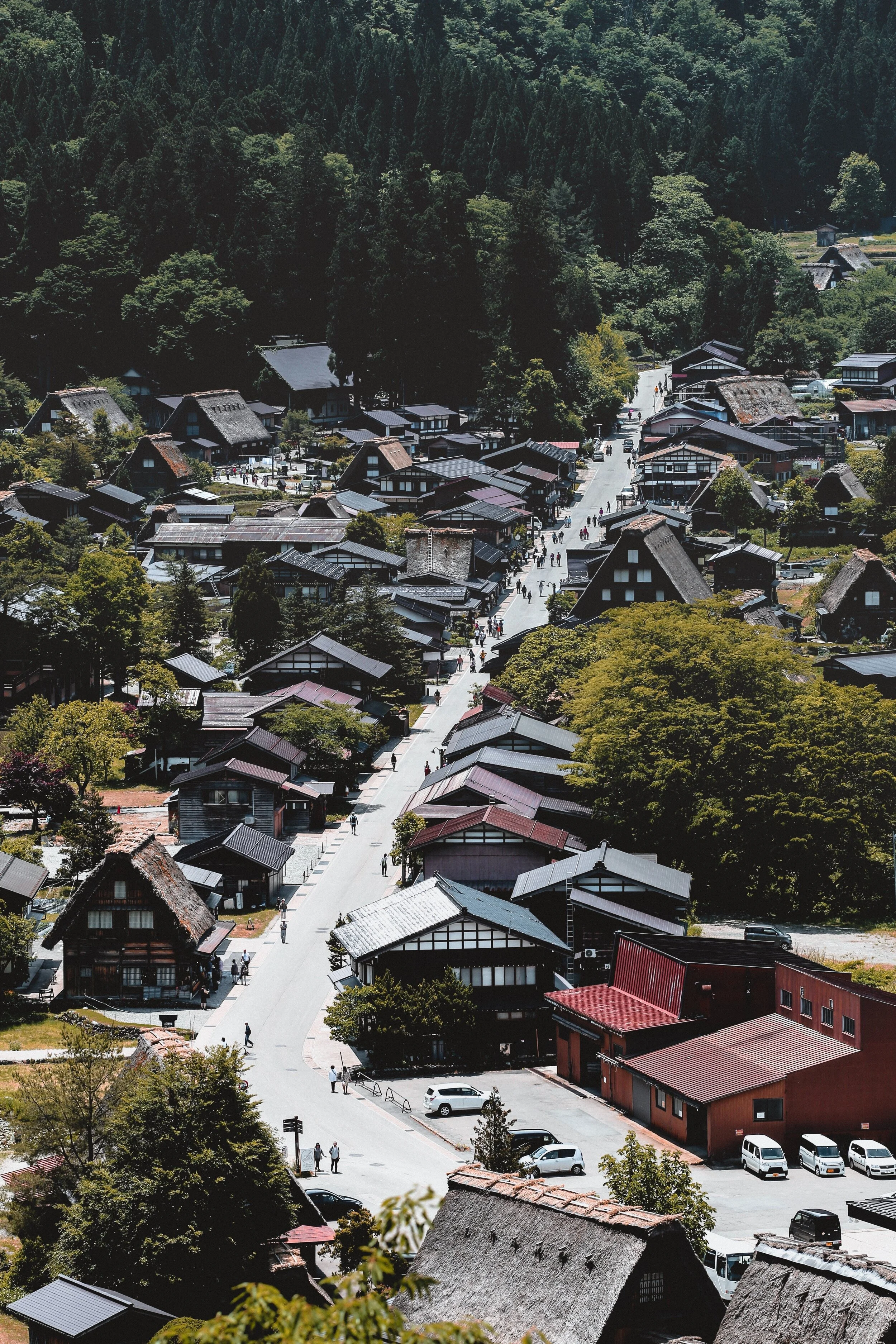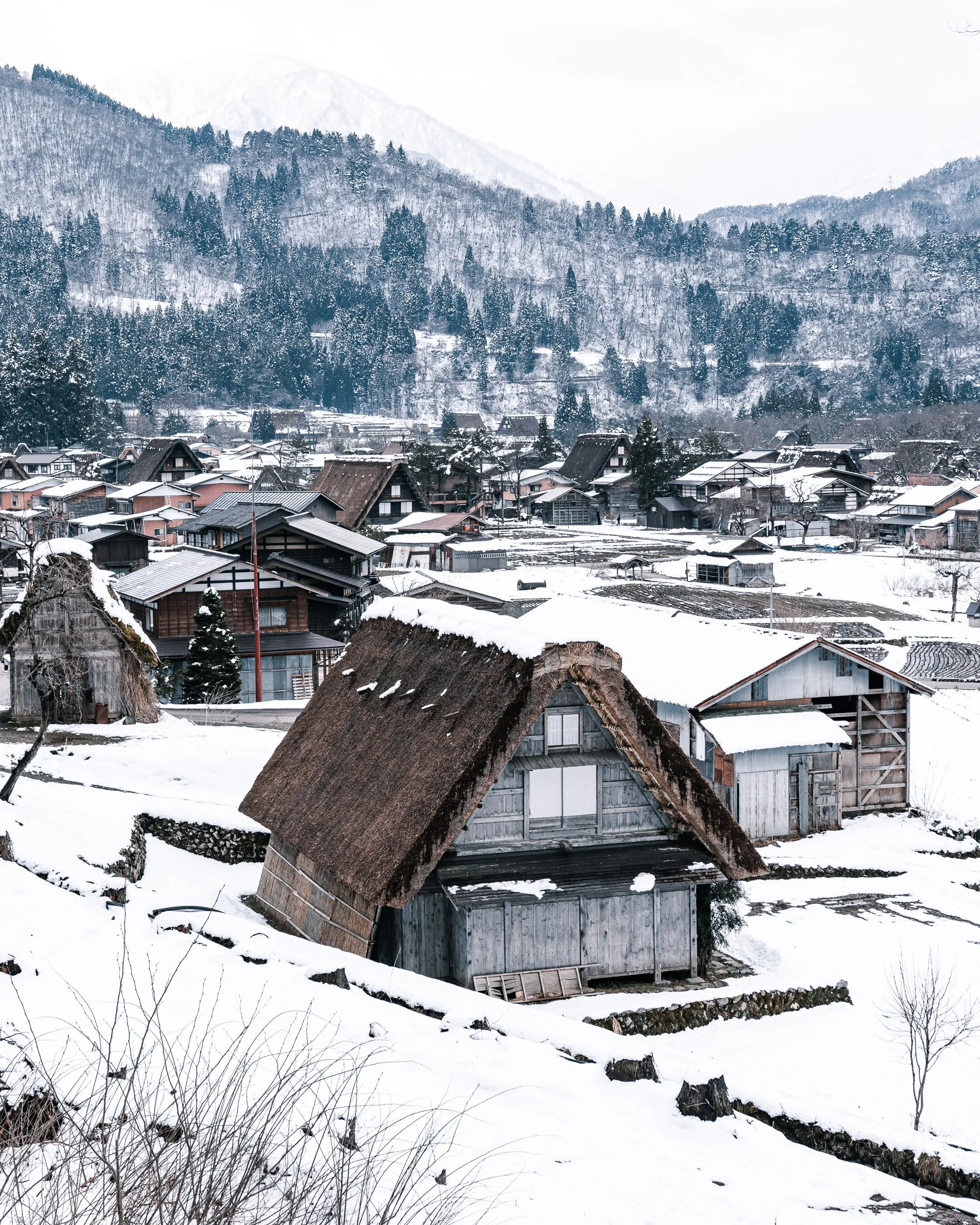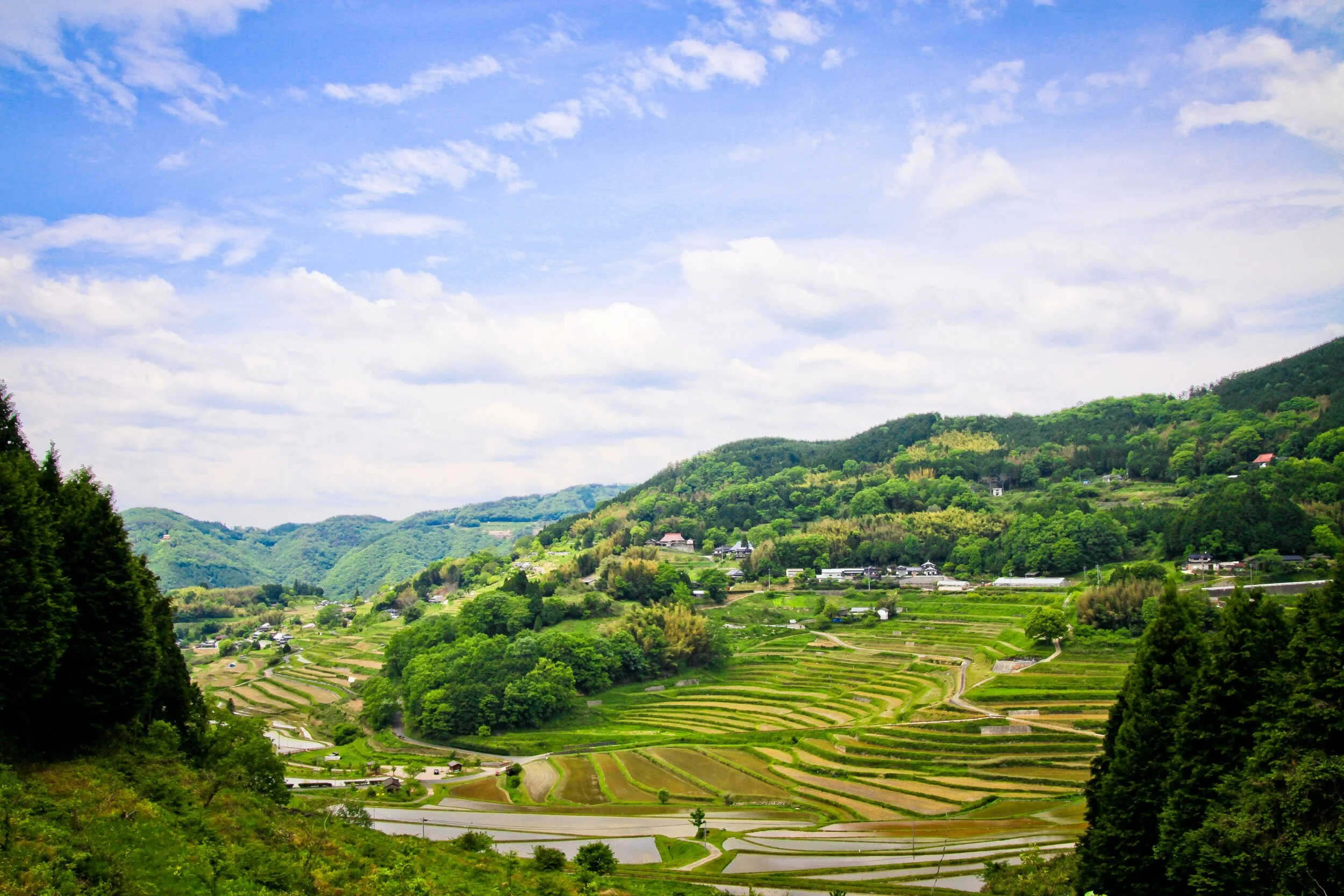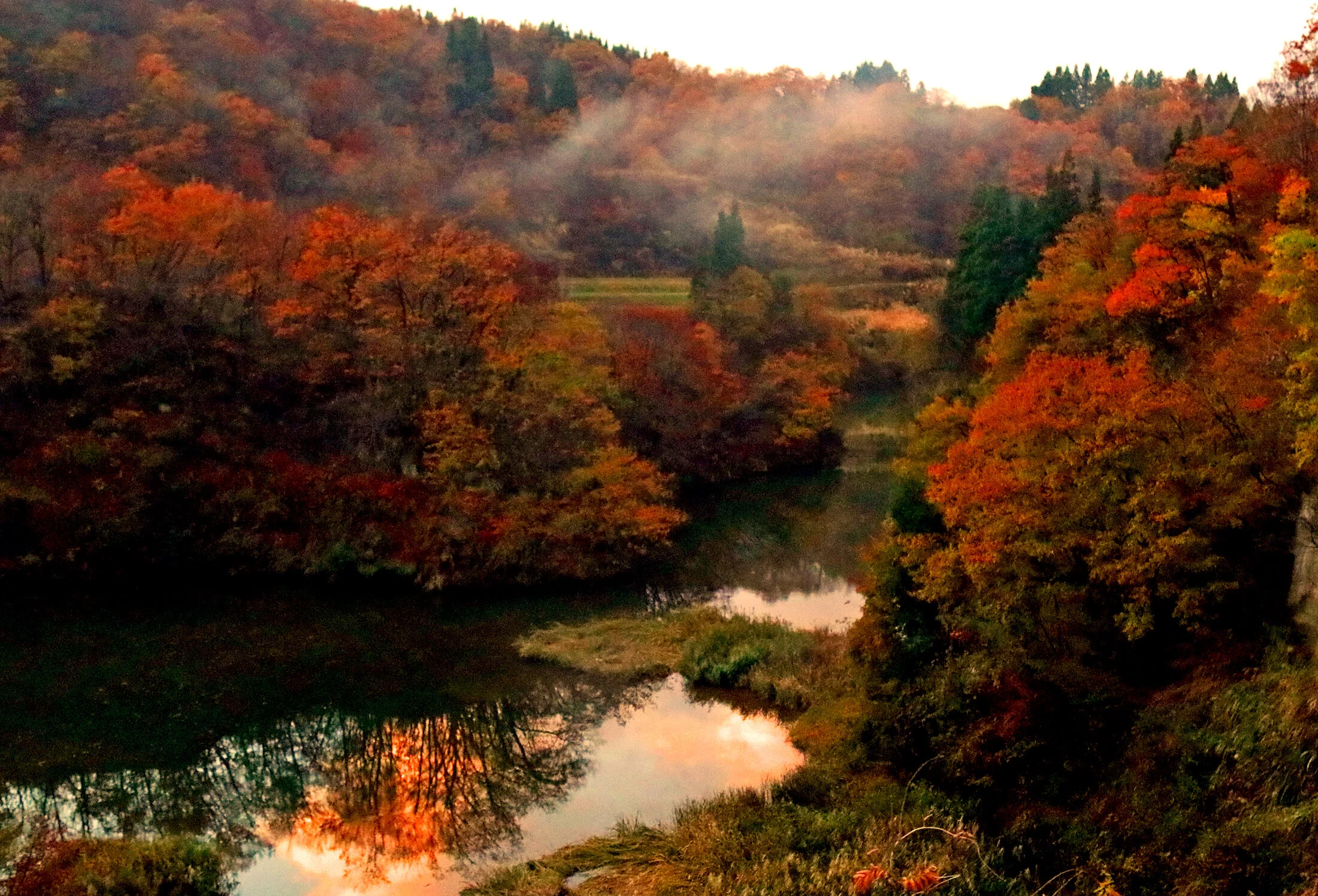7 Best Things About Living in Inaka, Japan’s Countryside
What is the first thing that pops into your mind when you think of Japan?
Is it the Shibuya Crossing in Tokyo, flooded with pedastrians heading in all directions? The crowded trains during peak hours, with commuters packed in like sardines in a can? Or is it the bustling streets of Dōtonbori in Osaka, lit up endlessly by massive neon signs that give us a glimpse into the city’s nightlife?
Photo credits: Jezael Melgoza on Unsplash, Agathe Marty on Unsplash
Most of us are familiar with Japan’s cities, and it’s no wonder why! Tokyo, Osaka, Kyoto, Sapporo, et cetera — these places are shopping, entertainment and food heaven. It’s only natural that tourists flock there to revel in everything they have to offer.
But often neglected is Japan’s beautiful countryside, also known as Inaka (田舎). With its own set of breathtaking sights and unique experiences, this is another side of Japan that many are not aware of! However, the details of such intricate culture present in rural districts can hardly be understood by a one day trip down to these places.
Aso, Kyushu
Photo credits: Ryoji Iwata on Unsplash
So let us take you on a virtual exploration of life in Japan’s countryside as we hear some insights from our very own Japanese colleagues!
1. The Breathtaking Nature
Perhaps the most enticing thing about living in the countryside is that you will always be surrounded by beautiful scenery. From towering mountains and rolling hills to flat farmlands and palm tree-fringed beaches, there is always a place to retreat to whenever you need an escape from life’s daily stresses. A getaway is right at your fingertips!
Featuring a view in Kumakōgen, Ehime
Photo credits: Mak on Unsplash
In fact, it is not uncommon for people to live directly beside the beach, giving them access to spectacular views of the sun setting over the ocean every day! Now what a sight to go home to…
One of our colleagues, Takaaki-san, shared that his favourite thing to do in Okinawa’s countryside is to bike around with his friends and enjoy the view of the ocean together. With the beach being just a stone’s throw away from his home, he can step into the waters to cool down under the blistering hot weather any time.
Yet another Japanese colleague, Shoji-san, enjoys soaking in the natural hot springs in the Aomori countryside. With their comforting hot waters and high mineral content, onsens provide a relaxing experience that eases both mind and body, especially during Aomori’s cold Winter months. Along with its potential health benefits such as increased blood circulation and metabolism, I could only wish I were there right now!
Photo credits: IS JAPAN COOL?, OOOBS Travel
Besides the abundance of incredible scenic spots, life away from the city also means less people, less noise and less pollution. If you enjoy the peace and tranquility of a slower life, the countryside offers a restorative respite from your usual hectic city life!
2. Distinct Delicacies
Japan’s culinary scene often focuses on seasonal and locally sourced produce, making for unique dishes in every town of Japan. In the countryside, greater access to fresh produce from nearby farms and oceans allows for mouth-watering speciality dishes that have been tirelessly perfected over decades.
Calling all Unagi lovers! Our colleague, Nakane-san, shares his love for the Unagi (うなぎ, eel) in Nishio. What’s different from the usual unagi, you may ask... Their local Unagi comes from the port town of Isshiki and it is known for its premium quality.
Additionally, the mild climate, rich soil and river mist from the nearby Yahagi River allows for high quality green tea leaves to be grown, allowing matcha to be one of Nishio’s pride and joy. (Find out where you can get a taste of some equally good Japanese matcha desserts in Singapore here!)
However, living in the countryside may also mean a slightly smaller selection of food available, especially those from other cuisines. With that being said, even globalisation has had an impact on the most rural of areas. The number of grocery stores, markets and convenience shops are always growing (even chain stores such as Don Quijote have made their way into the countryside!), so you can get what you need any time.
Photo credits: Joan Tran on Unsplash
3. Fun things to do
While there is indeed little to no nightlife in the countryside, all you night owls and alcoholics will be happy to know that there are still some Izakaya (居酒屋, Japanese bars) where people go to drink. After all, everyone still needs to let loose sometimes!
Yucho in Chikura, Chiba, Genpei in Teshikaga, Hokkaido and Yamako in Mariko, Shizuoka — these are just some of the few secret Izakaya hidden away in the countryside that are worth checking out for an authentic Japanese drinking experience!
Photo credits: Zhipeng Ya on Unsplash
There are also fewer shopping malls and department stores as compared to the city. Teenagers typically hang out around these shopping malls, not to buy anything specifically, but to pass time since there are fewer entertainment options around.
While you can get everything you need from these malls in order to live comfortably in the countryside, more expensive luxury goods or higher quality items are usually only found in the city. Our colleagues do not often leave the countryside, but they may occasionally take day trips down to the city in order to catch a movie at a newer, more comfortable cinema or to shop around in larger malls with greater varieties of choice.
Otherwise, the advancement of technology has made way for online shopping as well! Even if you live in the countryside, you’re able to get anything you want delivered straight to your doorstep. Oh, the wonders of the internet...
Additionally, there are unique Japanese traditions and festivals celebrated in the countryside, such as the Shishi-Odori (Deer Dance) practised in Kanegasaki, Iwate or the Doronko Matsuri (Mud Festival) held in Shirokawa, Ehime. These traditions play a part in forming the rich culture and heritage of rural Japan, allowing for a colourful and interesting lifestyle.
While these festivals are at risk of disappearing due to the shrinking rural communities, many towns are doing their best to prevent them from dying out by taking steps such as teaching their children about these traditions and encouraging media attention!
Renjakuchō, Kawagoe, Japan
Photo credits: Zhaoli Jin on Unsplash
4. The Space We All Need
Wider sidewalks and roads are common in the countryside. Houses are usually also shorter but bigger, and often have space for gardens! This is in comparison to the cities’ high-rise buildings, often packed tightly side by side to accommodate the ever-growing need for space, as more and more people migrate to urban areas.
Photo credits: Hmxxyy on Flickr, W W on Pexel
While most city-dwellers choose to stay in rented apartments instead of owning their own space due to the staggering cost of property in the city, it is a norm for people in the countryside to have their own houses. Since land is vast, prices are more affordable. Additionally, land can be inherited from one’s ancestors in the countryside, making it easier for people to have their own property.
Shirakawa-gō, Gifu, Japan
Photo credits: Chapman Chow on Unsplash, Rap Dela Rea on Unsplash
However, prices of rural land have actually been increasing as well! Due to redevelopment projects and improvement in infrastructure, the cost of living in rural areas have been rising gradually over the years, making it more difficult for the locals to get by like before.
5. No dreadful city jams
In the countryside, it is common for people to own cars as well since public transportation is less extensive as compared to the city. In some parts of Japan, heavy snow during Winter also makes it difficult for public transportation to operate, leaving most people with the option to drive.
Shirakawa-gō, Gifu, Japan
Photo credits: Dennis Agusdianto on Unsplash, Rap Dela Rea on Unsplash
Despite the higher car to people ratio, there are still fewer cars on the countryside roads, meaning less traffic jams unlike in bigger cities.
According to our colleagues, most people in the countryside obtain their driving license at the age of 18 and share a car with their parents in order to get around! Otherwise, biking is the other preferred mode of transportation.
6. The Exposure to Different Dialects
Did you know that people living in different regions of Japan may speak different dialects? For instance, Uchinaaguchi (ウチナーグチ) is the Okinawan dialect while Tsugaru-Ben (津軽弁) is the Japanese dialect spoken in western Aomori. This means that people from different regions may not even understand one another!
For instance, good morning in standard Japanese is Ohayō Gozaimasu (おはようございます) while in Uchinaaguchi, it is Ukimisoochii (起きみそーちー). Our colleague tells us that whenever he uses the Okinawan dialect in the city, people think that he is speaking a foreign language like English!
Photo credits: Lan Pham on Unsplash
Besides the different dialects, people in the countryside tend to be slightly friendlier as well. With a more relaxed pace of life and smaller communities, it only makes sense that the people there are likely to be more open and sociable to strangers.
7. Career & Social Opportunities
While the population of urban Japan is rising rapidly, that of rural Japan is declining just as quickly. More and more youth are moving out of their hometowns in order to have a shot at their dreams and ambitions in bigger cities where a wealth of academic and professional opportunities await them.
Photo credits: Dovile Ramoskaite on Unsplash
In the countryside, not many lucrative jobs are available. While a minority of youth do not mind staying in their hometown, most choose to leave to pursue their goals. With fewer adults supporting the rural community, this has resulted in an increasingly ageing society in the countryside.
On a brighter note, however, more young people are thinking of moving to the countryside to escape the isolation and high stress levels of living in Japan’s cities. This increased interest in rural living has led to the creation of a new movement pattern to describe people who move between urban and rural environments: the O-turn! O-turners opt for a lifestyle whereby they maintain two homes, one in the countryside and one in the city, with time split equally between the two, allowing for greater work-life balance.
Now that you understand the countryside charm...
Want to experience a slice of it for yourself? Authentic Visit Japan provides opportunities for travellers to experience Japan’s traditional lifestyles both in the countryside and by the seaside. Get a chance to live in an agricultural, mountain or fishing village through homestays or farmstays, interact with locals face to face and see how they live!
There are definitely both pros and cons to living in these rural areas, an experience which is worlds apart from the hustle and bustle of city life. But if your soul is aching for a brief reprieve or some good reconnecting with nature, this might be a sign that you’re in need of an authentic Japan countryside experience to widen your horizons!
Photo credits: Sense on Unsplash, Gudonjin Aiza on Flickr




